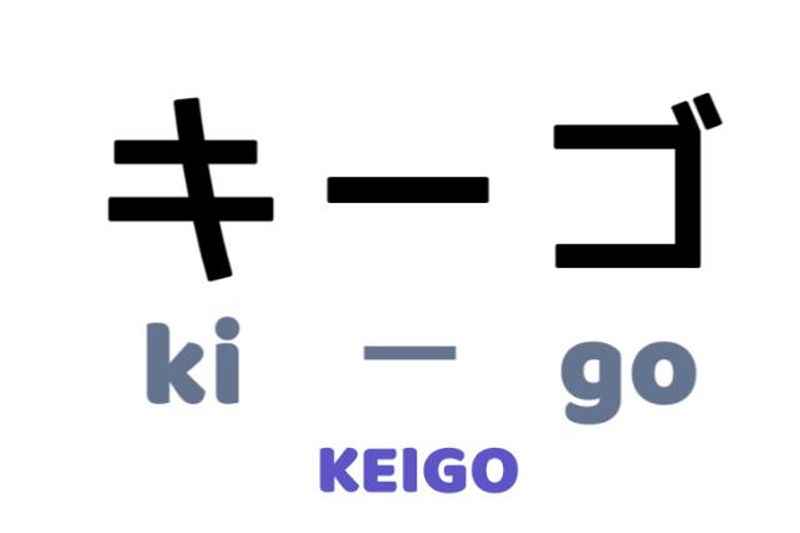How Hard Is It to Learn Japanese? | 2024 (with Photos)

So, you’ve decided to up your linguistics game and the language you’ve settled on is the Japanese language. Excellent choice!
A popular East Asian language, it is the ninth most spoken language globally, with over 130 million fluent speakers. That’s a lot of people to talk to! But how hard is it to learn Japanese and what are the best ways to learn it?
The biggest factor in difficulty is your commitment and willingness to practice. Learning a language that uses the Latin alphabet like French, Spanish, German or Italian gives you a head start because you can already read and understand the letters. Japanese means picking up a whole new writing system and learning to read all over again.
Unlike our measly 26 letters, the Japanese alphabets - yes, plural - are made up of thousands of letters, so it’s no wonder people feel intimidated by starting to learn it. Don’t worry, though - it’s not actually as difficult as it may seem and we will show you just how hard it is to learn Japanese.
English vs Japanese - What Are The Differences?

Perhaps the biggest difference that a native English speaker would pick up on when learning Japanese is their phonetics. A lot of the sounds that the Japanese language uses don’t exist in the English language, so pronouncing words proves tricky.
In Japanese, one of the biggest influences on the language is the culture itself, and a huge part of fluency is understanding more about life for East Asian communities. One specific thing to mention is Keigo, the Japanese politeness system.
When you’re talking to those with authority over you, AKA the people in society who effectively ‘outrank’ you, you need to behave differently. There are a lot more of these figures than you might think! Your bosses, teachers, lawmakers, officials...
Becoming Familiar with Keigo

Essentially, you need to bear in mind the two fundamentals of Keigo:
- Always humble yourself, minimizing your thoughts and actions to be respectful
- Always uplift or compliment the person who holds authority over you, encouraging and uplifting their thoughts, words, and actions
Unfortunately, this means learning a whole new vocabulary of respectful language, which changes the words you need to use depending on the context. Be prepared for that one.
If that sounds intimidating and stressful - don’t worry. Keigo is an ancient Japanese tradition, the fundamentals of which come from incredibly easy linguistic basics that you’ll pick up on right at the start of your learning journey.
How Hard Is It to Learn Japanese Writing?

Now, this is where things get a little more complicated. How hard is it to learn Japanese as far as writing is concerned? Well, when it comes to Japanese, there are actually THREE scripts that make up the Japanese alphabet. That’s not including romaji, the Romanization of Japanese.
Hiragana and Katakana
First things first, we have hiragana and katakana - these aren’t so much alphabets as syllabaries (a set of characters representing syllables). These scripts together are referred to as the kana.
Both scripts work in a systematic way and the two are very similar looking. The primary change is simply that katakana is used for writing with emphasis or incorporating foreign words into the language.
Japanese Kanji
The third and final Japanese script is kanji, which actually utilizes Chinese characters and is therefore primarily used for content words (those that have a clear-cut meaning and can be looked up in a dictionary, for example).
It is notorious for being the most difficult to learn, though a native Chinese speaker (or another language derivative of Chinese) will pick it up much easier. Thousands upon thousands of kanji symbols exist!
That being said, there are exactly 2,136 joyou kanji, which are in basic terms just the official “regularly used” Chinese characters, and those that high school students will be taught.
Being a lot more complicated than the kana as a collective, many kanji characters actually have multiple possible readings and alternative meanings, so picking it up can take a whole lot more dedication than learning kana does.
Reading
Writing is one thing, but reading Japanese can also prove quite tricky! Once you’ve mastered all of those alphabets we talked about (katakana, hiragana, and kanji) then you’re good to go - typical Japanese writing uses all three of the main alphabets in combination.
Each alphabet or ‘script’ has a specific purpose - referring to a different part of the language, in order to help you figure out the origin and function of each word you read. Intertwined together, they can form a complex Japanese sentence.
Kanji are the foundation or building blocks of each word, indicating the basic meaning, whilst hiragana is used to indicate phonetics, grammar, and word endings, and katakana is used to indicate foreign words from other languages.
The 46 characters of hiragana represent a corresponding syllable - these create every single sound of the entire language - therefore, as soon as you’ve mastered this, you’ll be able to read (and therefore say) absolutely anything in Japanese written in hiragana!
Grammar
Mastering your reading and writing skills is a whole different ball game to this toughie… grammar. Fortunately, Japanese grammar is quite straightforward for the most part, and primarily about (shudders) learning how to conjugate verbs.
Bear in mind that, like with English, French, Spanish, and pretty much any other language that exists, there are various dialects that make up the language across different regions - the emphasis is placed on different parts of the word, for instance.
Word order is another thing you ought to think about - unlike English speakers, you’ll find that Japanese speakers actually place any verbs at the end of their sentence - but this is a consistent feature of the language system and doesn’t change.
Top Tips For Learning Japanese

Now, let's look at some learning tips for Japanese. Is Japanese hard to learn? Not when you know how!
1. Establish A Goal
First, decide what you’d like to learn, whether that is several words, a number of phrases, enough to get by, or total fluency, and when you’d like to achieve that by. Now you have something to work toward.
By planning exactly what it is you want to be able to do, you’ll have motivation and drive.
Want to be able to order Japanese food or read a menu fluently? You do that! Want to speak the language to natives on a vacation? Go for it!
Whatever your intentions, it’s all about personal preference and your willingness to give things a try. As long as you do your best, that’s all that matters.
2. Take an Online Japanese Course
There are plenty of great online Japanese courses to help you learn Japanese, making it less hard. Pimsleur Japanese is an audio-based course that focuses on oral language, and they offer plenty of different language courses to learn.
The lessons are offered in both women's and men's voices so that you can learn how different genders speak using correct endings.
Pimsleur offers 150 30-minute lessons in Japanese, and you can even use the driving mode to learn in the car. There are different levels of subscriptions to choose from according to your expertise level. Be sure to check out our review of Pimsleur.
3. Practice Everyday
Even if you just spend five minutes a day learning a couple of new words or working on your reading and writing skills with an app or online tutorial, you’re slowly embedding and consolidating your knowledge.
The more you try, the more effort you put in, and the stronger your commitment, the more likely you are to succeed. It’s all about motivation, so find ways to reward yourself, like a nice treat after a full week of revising your work every day.
4. Work With Others
Enlist a friend or study buddy to work with you. By practicing alongside someone else, not only will you pick up on new content you haven’t covered yet, but you can also receive feedback on your own reading, writing, and speaking.
It helps if you happen to know a fluent Japanese speaker. Don’t worry if you don’t - just the motivation that you and a buddy can provide is enough to encourage you to keep going.
5. Find a Japanese Tutor with italki
There are plenty of great online Japanese tutors to help you learn Japanese. An online tutor will help you to improve your Japanese speaking.
italki is a global language learning community that connects students and teachers for 1-on-1 online language lessons. More than 10,000 teachers are teaching more than 5 million students over 130 languages on the italki platform. Get $10 Free italki Credit.
6. Make It Relevant
Watch your favorite TV shows or movies and put on Japanese subtitles! Or, even better, watch Japanese films and television but with English subtitles! These tiny steps can help you become much more familiar with the language, in a quicker period of time.
It's Important To Learn Japanese For Traveling to Japan

For travelers venturing to Japan, learning Japanese proves invaluable in enhancing their experience. While many Japanese people understand basic English, communication can be limited outside major tourist areas. Understanding Japanese characters and sentences aids in navigation, reading signs, and ordering food confidently.
Compared to English grammar, Japanese syntax differs significantly, making it beneficial to familiarize oneself with the language before traveling. Though considered a difficult language, mastering hiragana and katakana, the basic writing systems, can prove sufficient for basic communication.
Polite language, a vital aspect of Japanese culture, ensures respectful interactions with locals. While challenging for European speakers, the dedication of a Japanese learner to understand and embrace the language is often appreciated by Japanese natives.
Moreover, delving into Japanese studies allows travelers to appreciate the country's rich history and traditions on a deeper level. Although not tonal like some other languages, the nuances of Japanese pronunciation are vital for clear communication. Learning Japanese opens doors to a more immersive and culturally enriching journey through Japan.
FAQs About How Hard It Is to Learn Japanese
Let's look at some frequently asked questions about learning Japanese.
How long does it take to learn the Japanese writing system?
The time to learn the Japanese writing system varies based on individual dedication and prior language experience. Mastering hiragana and katakana can take a few weeks, while learning kanji may take several months to years, depending on the number of characters you aim to learn.
Can you learn native Japanese words by just listening?
Yes, immersion and active listening can help learners absorb native Japanese words and phrases. Regular exposure to spoken Japanese through conversations, podcasts, or media aids in understanding pronunciation, intonation, and natural expressions.
Can teenagers learn Japanese grammar?
Absolutely, teenagers have a remarkable ability to grasp new languages, and Japanese grammar is no exception. With enthusiasm and practice, teenagers can develop strong language skills and adapt well to the different grammar structures of Japanese.
Can seniors learn the Japanese language?
Yes, seniors can certainly learn Japanese. While language learning may take longer due to cognitive changes, seniors can benefit from their experience in learning other languages. Patience, consistent practice, and utilizing resources tailored to their needs can aid in successful language acquisition.
Summing Up: How Hard Is It to Learn Japanese?
Learning spoken Japanese is a rewarding pursuit, but it comes with challenges. Its complex writing systems (hiragana, katakana, and kanji) can be daunting. Classified as a Category IV language for native English speakers, Japanese's unique phonetics and elaborate politeness system, Keigo, add to its difficulty.
However, grammar is relatively straightforward. Setting clear goals and practicing consistently is essential for success. Online courses, language apps, and interaction with native speakers can aid in learning. Embracing Japanese media and culture makes the journey more enjoyable.
While challenging, mastering Japanese opens doors to a fascinating culture and a global community of speakers.







